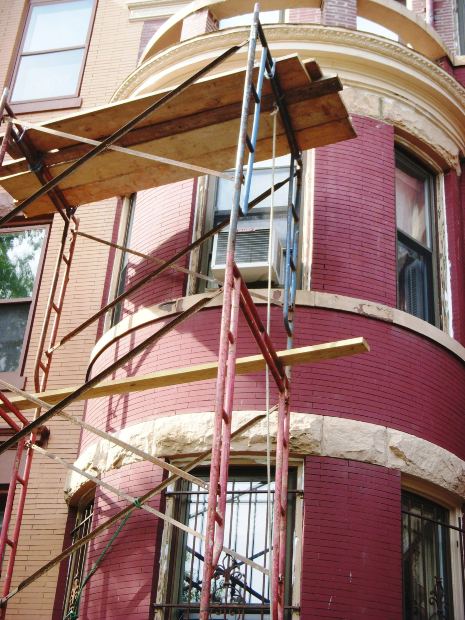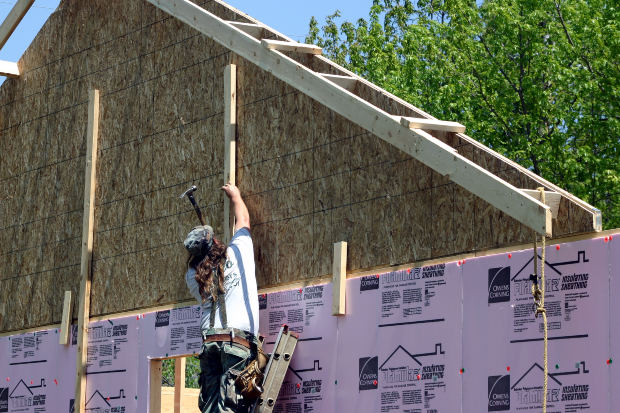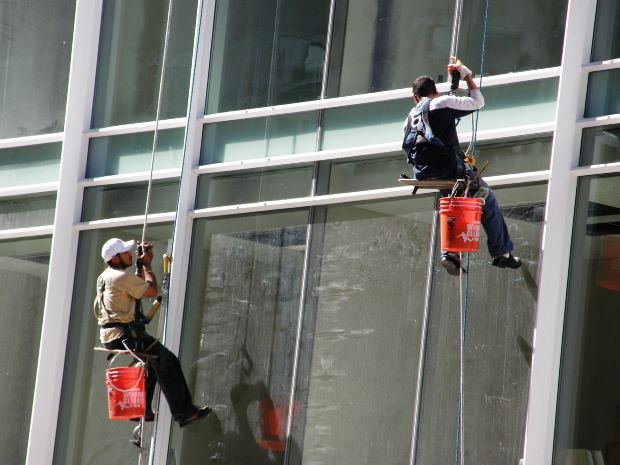A Cleveland, Ohio jury has awarded a $39 million verdict against a paving company that sacrificed worker safety to save a few dollars, resulting in the death of a member of the construction crew. The Shelly Company of Thornville, Ohio was found to be negligent and at fault for the death of Randy Roginski, who leaves behind a wife and three children.
The fatal accident occurred on July 27, 2010. Randy Roginski, a 41-year-old Ohio native, was working as a paving inspector on an active construction site for Solar Testing Labs, Inc. According to the National Trial Lawyers, “Roginski [who was wearing reflective clothing] was standing on the berm on the right side of the highway when he was struck by a passing motorist.” When first responders arrived, he was pronounced dead at the scene.
The speed limit on that heavily traveled area of highway is 65 miles per hour. Drivers were expected to slow down to approximately 25 miles per hour when travelling past the active construction zone, which proved to be extremely difficult at the time of the accident-around midnight. According to Christian Patno, one of the plaintiff’s attorneys, “the Shelly Company was supposed to have hired at least two highway patrol officers to provide protection that night, with one cruiser stationed at the start of the construction zone, and another four miles into the zone. But only one patrolman was working that night, stationed about halfway into the zone.”
Continue reading
 Massachusetts Workers' Compensation Lawyer Blog
Massachusetts Workers' Compensation Lawyer Blog


 The victim, Edward Lake II, 60, died as he was unloading a bundle of rebar set to be used in the construction of the new $1.2 billion stadium. Both state and local authorities investigated the incident, and the lead construction manager halted work on the project for the remainder of Monday. The death is the second to take place at the site in four months. According to the contractor, employees would resume work on Tuesday and take part in safety meetings and be offered counseling.
The victim, Edward Lake II, 60, died as he was unloading a bundle of rebar set to be used in the construction of the new $1.2 billion stadium. Both state and local authorities investigated the incident, and the lead construction manager halted work on the project for the remainder of Monday. The death is the second to take place at the site in four months. According to the contractor, employees would resume work on Tuesday and take part in safety meetings and be offered counseling. The construction business remains the most hazardous work industry in the United States, accounting for nearly 20% of all workplace fatalities annually. While both victims in this case are expected to survive, the incident serves as yet another reminder to construction workers of how dangerous their job can be. Carpenters and roofers incur risky situations on a day-to-day basis, and among these types of workers, falls are the leading cause of injury or death. In a report published by The Massachusetts Coalition for Occupational and Safety Health, out of the 32 reported work-related deaths in Massachusetts last year, six were cause by falls.
The construction business remains the most hazardous work industry in the United States, accounting for nearly 20% of all workplace fatalities annually. While both victims in this case are expected to survive, the incident serves as yet another reminder to construction workers of how dangerous their job can be. Carpenters and roofers incur risky situations on a day-to-day basis, and among these types of workers, falls are the leading cause of injury or death. In a report published by The Massachusetts Coalition for Occupational and Safety Health, out of the 32 reported work-related deaths in Massachusetts last year, six were cause by falls.  Currently, OSHA enforces a rule dated 40 years to regulate permissible exposure limits (PEL) for silica exposure, which is inconsistent between different work industries. The proposed rule would bring these PELs up to workplace standards and into the 21st century; greatly lowering the amount of silica exposure to workers. OSHA predicts that this new mandated policy would save nearly 700 lives per year and prevent 1,600 new cases of silicosis annually.
Currently, OSHA enforces a rule dated 40 years to regulate permissible exposure limits (PEL) for silica exposure, which is inconsistent between different work industries. The proposed rule would bring these PELs up to workplace standards and into the 21st century; greatly lowering the amount of silica exposure to workers. OSHA predicts that this new mandated policy would save nearly 700 lives per year and prevent 1,600 new cases of silicosis annually. Whether it was a misstep by the victim, a manufacturing defect with the ladder or any other circumstance that caused the fall, ultimately the roofing company may be liable. By OSHA standards, employers are responsible for providing safe work environments for all of his or her employees to prevent hazardous situations that pose the threat of serious bodily injury or death. Though the details of this situation are still vague, what can be discerned is that had proper safety precautions been taken; such as the use of a safety harness, the man’s death may have been prevented.
Whether it was a misstep by the victim, a manufacturing defect with the ladder or any other circumstance that caused the fall, ultimately the roofing company may be liable. By OSHA standards, employers are responsible for providing safe work environments for all of his or her employees to prevent hazardous situations that pose the threat of serious bodily injury or death. Though the details of this situation are still vague, what can be discerned is that had proper safety precautions been taken; such as the use of a safety harness, the man’s death may have been prevented. 







